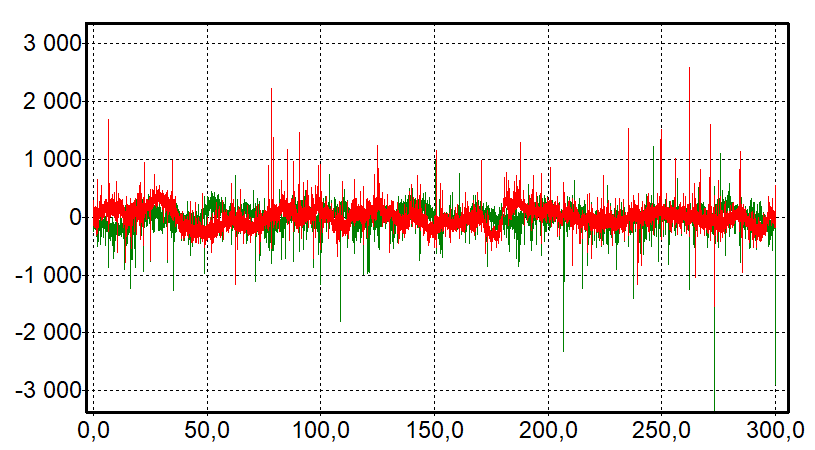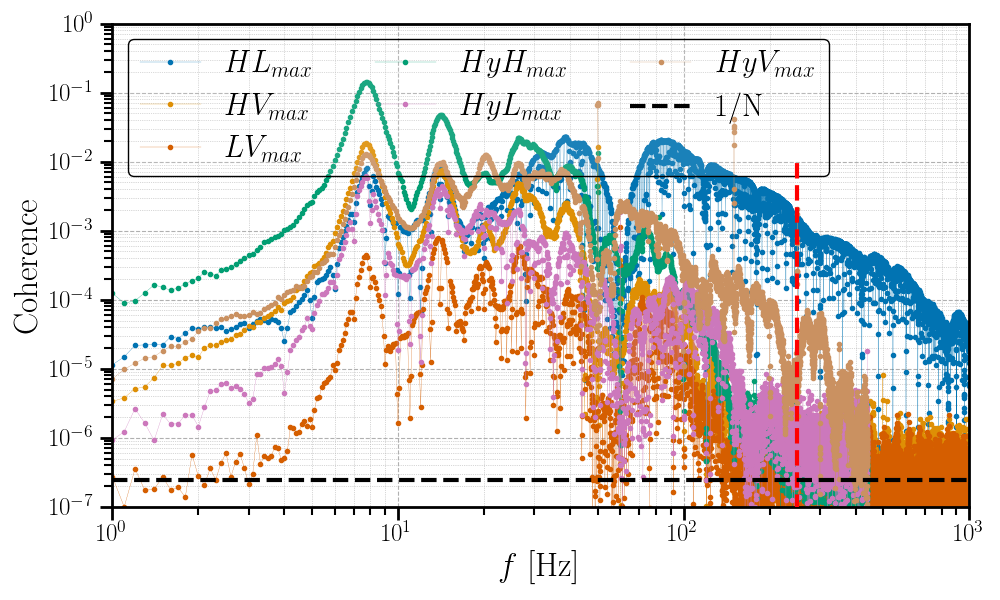Astronomy Object of the Month: 2023, November
< previous Archive next >
Thunderstorms on Earth and gravitational wave detection
Electromagnetic waves of extremely low frequencies (0.03 Hz - 300 Hz; ELF) measured by a team from Astronomical Observatory of the Jagiellonian
University (see Figures 1 and 2) are mainly generated by electrical discharges in
storm centers around the world and - before they are dumped - encircle the Earth globe several times in a spherical resonance cavity forming
between the Earth's surface and the ionosphere. What significance do they
have for measurements of gravitational waves - in a similar frequency range
- with LIGO interferometers in the USA, VIRGO in Italy, and, from this year,
also Kagra in Japan? These detectors measure changes in the length of several
kilometers’ long interferometer arms under the influence of a passing gravitational wave with astonishing accuracy of the order of 1/10,000 the size
of an atomic nucleus. On the other hand, the above-mentioned
ELF electromagnetic pulses can penetrate deeply under the earth's surface, including into the interior of gravitational wave detectors, exerting - significant for the considered accuracies - disturbing forces on the detector elements sensitive to the varying magnetic field. Such waves can reach several gravitational wave detectors almost simultaneously, potentially causing correlated readings in their measurements, which could be interpreted as the effect of a gravitational wave. For this reason, the study of the possible impact of ELF electromagnetic waves on the operation of the LIGO and VIRGO detectors has been conducted with the participation of the team from the Jagiellonian University for many years, using our precise measurements made in an environment clean of electromagnetic disturbances. The reported here last work on this topic using measurements at our Hylaty station in the Bieszczady
Mountains was published by an international team at the beginning of this year.

As mentioned above, the magnetic noise correlated at Earth-scale distances may have a disturbing impact on future searches for gravitational wave signals using ground-based interferometric detectors. To investigate such a possible impact, before starting the O3 measurement phase, high-sensitivity magnetometers were installed next to the VIRGO detector and both LIGO detectors. Independently, the team from OA UJ provides magnetic fluctuation data from our WERA system magnetometers for these analyzes. Thanks to this, in the currently published work, we were able to analyze in the frequency range 1–1000 Hz the magnetic correlations of ELF magnetic signals reaching the Virgo detector, both LIGO detectors and the Hylaty station (up to 300 Hz), with distances between measuring stations ranging from 1,100 to 9,000 km (see for example Figure 3 copied from the publication). In this work we consider the influence of such correlations of magnetic field fluctuations on the search for gravitational waves due to Schumann resonances (<50 Hz) as well as higher frequencies above 100 Hz. We show that single lightning strikes are a likely source of the observed correlations of magnetic field fluctuations in gravitational wave observatories and discuss some of their features. We also anticipate their possible impact on the search for an isotropic background of gravitational waves, as well as on the search for short-lived gravitational wave pulses, both wave flashes with no structure known from models, as well as "modeled" signals, e.g. in the case of coalescence of compact binary black holes or neutron stars. While in the last third phase observations by LIGO and Virgo showed no apparent impact on the measurements of correlated magnetic field fluctuations, we estimate that they may emerge in future observations with increased measurement sensitivity. For example, at the current level of magnetic coupling, the recorded neutron star merger signals in third-generation detectors are likely to be contaminated with many correlated lightning-generated impulses. Therefore, the paper suggests that future work on improving detectors should include effort to limiting the coupling of the detector equipment to impulses generated by storm discharges. For example, it should be possible to reduce lightning-induced currents in the walls of an interferometer laser beam tube that pass through sensitive areas of possible magnetic coupling in current detectors. We also indicate that measured diurnal and seasonal variability in lightning activity may be useful in distinguishing correlations in detector measurements generated by gravity waves from those produced by lightnings.
The current work is a part of the Jagiellonian University contribution within the national POLGRAW consortium to the VIRGO gravitational wave detection project.


Original publication:
Kamiel Janssens, Matthew Ball, Robert M. S. Schofield, Nelson Christensen, Raymond Frey, Nick van Remortel, Sharan Banagiri, Michael W. Coughlin, Anamaria Effler, Mark Gołkowski, Jerzy Kubisz and Michał Ostrowski, Correlated 1-1000 Hz magne$ , Phys. Rev. D, 107, 2004 (2023)
The research was conducted at the Department of High Energy Astrophysics of the Jagiellonian University’s Astronomical Observatory (OAUJ).
|
Michał Ostrowski Astronomical Observatory Jagiellonian University M.Ostrowski [@] oa.uj.edu.pl |


